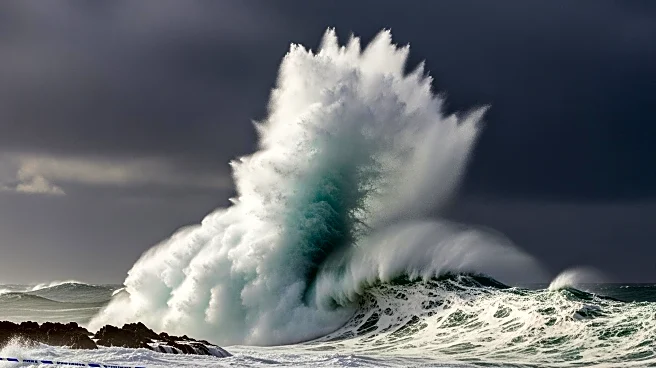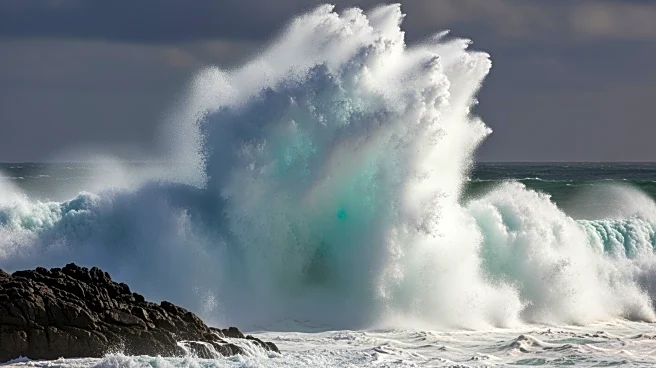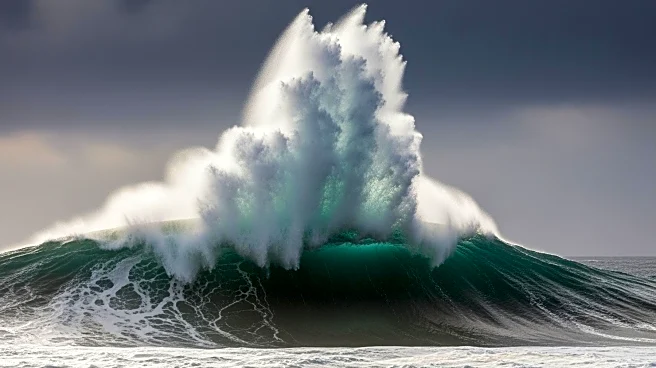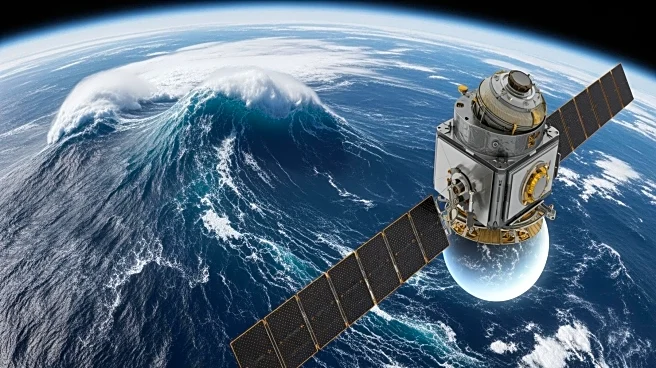What's Happening?
A rogue wave of unprecedented size was recorded off the coast of Vancouver Island, Canada, on November 17, 2020. The wave, measured at 17.6 meters by a MarineLabs buoy, was analyzed by researchers from
the University of Victoria. This wave was approximately three times the height of the surrounding sea state, marking it as an extreme anomaly. Rogue waves are known for their sudden appearance and significant size, often exceeding twice the height of surrounding waves. This particular wave has become a benchmark for understanding the potential extremities of oceanic conditions.
Why It's Important?
The occurrence of such a massive rogue wave highlights the increasing unpredictability and potential danger of ocean conditions. As climate change continues to affect global weather patterns, the frequency and intensity of such oceanic events may rise. This poses a significant risk to maritime activities, including shipping and offshore operations, as well as coastal infrastructure. Understanding and predicting these waves is crucial for improving maritime safety and preparing for future oceanic challenges.
What's Next?
Following this event, researchers are utilizing a network of coastal buoys to monitor wave behavior around Vancouver Island and beyond. This data collection aims to identify patterns that could predict the occurrence of rogue waves. As the climate continues to change, the scientific community is focused on enhancing predictive models to mitigate the risks associated with these extreme oceanic events.
Beyond the Headlines
The record-setting rogue wave serves as a stark reminder of nature's unpredictable power. Despite advancements in technology and data collection, the ocean remains a formidable force. This event underscores the need for continued investment in maritime safety and climate resilience, as well as the importance of understanding the broader implications of a warming climate on ocean dynamics.












